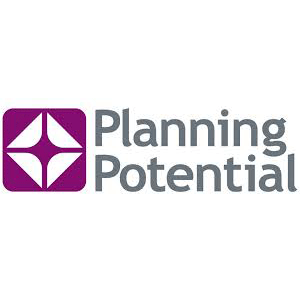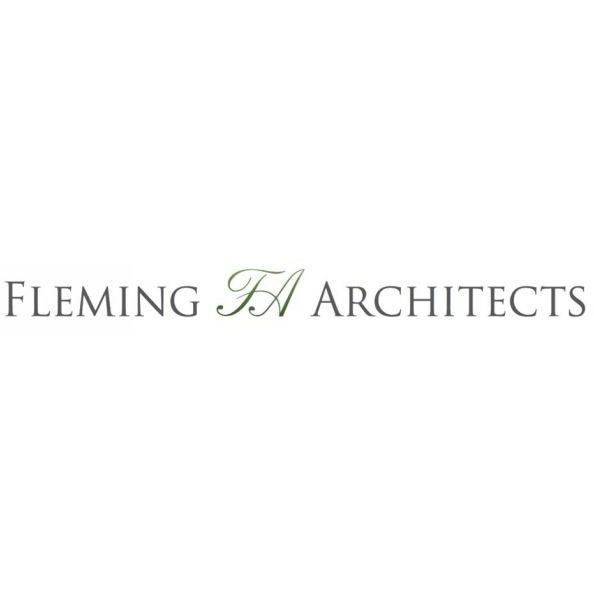Contact us to get a free quote
We are experts in providing Sustainable Drainage Strategies for districts located within the Lead Local Flood Authority of Buckinghamshire
We ensure that our sustainable drainage strategy or flood risk assessment is complete and comprehensive and provides sufficient information so that you do not invest time and finances into submitting an application that could be objected to by the Lead Local Flood Authority
Our expertise allows us to give you the full range of services for drainage strategies including 2D surface water run-off modelling, approved drainage calculations using Micro Drainage and design of Sustainable Drainage Systems in complex site conditions.
Our experience has allowed to create this guide for drainage strategies.
Buckinghamshire Council is the Lead Local Flood authority for:
Wycombe District Council
Aylesbury Vale District
South Bucks District Council
Chiltern District Council
Buckinghamshire County Council.
We work collaboratively with planners, landscape architects, architects to develop a design that meets the requirement of the developer and the local authority. We create developments that are more resilient to climate change.
You receive clear and specific advice which:
Meets the local and national planning policies
Uses common sense to produce a resilient sustainable drainage design
Enables you to make informed changes to the design and achieve planning
It is costs effective while making your development more sustainable
Contact us today on 01608 510121 or get a free quote
We achieve 100% approval on our drainage strategies
Our Reports
If you are uncertain about your requirements, give us a call, we are happy to talk you through the options.
Contact us today on 01608 510121 or get a free quote
The benefits of using our drainage strategies for your planning application
You receive the first report in 48hrs
If you need soakaway tests, we will organise quotes for you or explain how to undertake them
You will obtain a robust design for surface water drainage
We use cost effective Sustainable drainage systems
Fixed price for all our drainage strategies
We support you through the planning application until a decision is made
Our Drainage Reports
We achieve approval on our drainage strategies by the LLFA by:
Providing a Surface Water Drainage Strategy in compliance with the National Planning Policy Framework Policy 10 Paragraph 103 and Buckinghamshire SuDS guidance
Indicating permits required from other consenting bodies such as Flood Defence Consent from the Environment Agency or Land Drainage Consent from the Internal Drainage Board or Buckinghamshire Council.
Ensuring that the drainage strategy can be implemented to meet SUDS guidance, surface water and groundwater flood risk requirements.
Our work reduces the need for costly changes to design and layout at the later stages
Our proactive approach allows the developers, landscape designers and architects to fully understand the benefits of using Sustainable Drainage Systems in their developments.
Contact us today on 01608 510121 or get a free quote
Frequently Asked Questions
When is a drainage strategy report required?
A surface water drainage strategy report for planning is required for:
All major planning applications. A major application is a development bigger that 10 houses or the site is greater than 1 hectare or an extension in floor space greater than 1000m2
Any size development that can exacerbate existing drainage problems
Minor developments located in areas at risk of river or surface water flooding
Any size development where there is an increase of impermeable areas or the local drainage authority deemed to be necessary
The surface water drainage strategy is carried out in compliance with the local site condition and guidance by the Lead Local Flood Authority.
What are the responsibilities of Buckinghamshire Council, the Local Planning Authority and the developer in regards to the drainage?
Buckinghamshire Council drainage team checks whether the proposed sustainable drainage strategy scheme complies with their relevant technical standards and policies. The council responsibility is to:
Assess the drainage strategy on its technical merits
Provide comments and conditions as required
Use planning conditions to establish clear arrangements for Sustainable Drainage Strategy maintenance
The Local Planning authority ensures that the sustainable drainage system is built in accordance with the plans
The developer is responsible for the SuDS maintenance
Why do I get a drainage planning condition after providing a drainage strategy?
The drainage is conditioned because the development can change between planning approval and construction.
It can also be conditioned if soakaway tests were not undertaken or discharge rates were not agreed with the Environment Agency or the local water company. The condition looks like this.
You can re-submit the same drainage strategy used at planning stage to clear the planning conditions and produce the detailed design for construction. This is assuming that there were not changes to the development.
Can I change the drainage layout between planning approval and the discharge of the condition?
Yes, you can change it as long as the specifics and principle of the drainage design (shown at planning stage) is maintained. For instance you should maintain the discharge rates and reference to approved discharge permits.
I have a pre-, during and post-development planning condition, can this be right?
We see that more and more planning approvals have during and post development conditions, more precisely the council is now asking for construction verification reports which should be completed by a third party on behalf of the contractor.
We have completed a couple of these reports.
Can I challenge the wording of a drainage planning conditions?
It depends on the wording of the conditions. If a condition is stringent or does not make sense, you can ask for clarification. In some cases errors can occur, for instance asking for a complete foul water sewer design in a build-up area which has a sewer connection.
We know that this condition is not necessary as the LLFA only deals with surface water. However the planning officer may have a different understanding of roles and responsibilities.
Contact us today on 01608 510121 or get a free quote
What are the key requirements from Buckinghamshire LLFA?
We have done substantial amount of drainage designs for this council our experience has shown us that these requirements are the most important:
Carry out a soakaway test in accordance with BRE185. The soakaway test must be completed 3 times. This in very important as Site Investigations had to be repeated due to failure to complete the soakaway tests 3 times. The soakaway test should also be completed in the same or very close by the location of the proposed Sustainable Drainage Feature
Check for groundwater. Bucks will ask you to demonstrate the potential groundwater level of the site
Connecting to sewer - Complete a pre-development enquire with Thames Water and agree discharge rate
Discharging to a major river- Complete initial consultation with The Environment Agency
Discharging to an unnamed watercourse – Apply for a land drainage consent.
How to do a soakaway test or percolation test for SuDS?
There are two types of percolation tests.
The first one is the percolation test to BRE365. This video shows how to undertake one.
The soakaway tests can be undertaken by a site investigation company or your local builder or farmer or you can undertake them.
We will provide you with:
Detailed instructions to undertake the soakaway tests
A drawing showing their location and depths
Calculate the infiltration rates once you give us the site results
The second method is a deep borehole test, in which a hole is drilled into the ground and the discharge rate is calculated.
This method is used in areas where the permeable layers are underneath impermeable soils. For instance, clay overlaying chalk.
This type of soakaway test is undertaken by a site investigation company that has the equipment. If required, we can obtain quotes and organise this work.
How do I check for groundwater?
There are two ways:
Over excavate soakaway pits. Once the soakaway test are complete over excavate by 1.0m below the base of the pit
Complete a window sample and take a groundwater level monitoring survey during the winter months (November to March) to establish the seasonal high groundwater level.
The groundwater level monitoring is likely to be asked for site which are known to have high ground water levels or where groundwater is found at 1m below ground level.
There are different ways to get around this by using suitable Sustainable Drainage Systems what a bout rainwater gardens and shallow basins or avoid pipes all together.
Is there any advantage on using pre-application drainage advice from the LLFA?
The advice from the council is advantageous only if you have undertaken the soakaway tests and completed the initial drainage design. We recommend having a meeting with the LLFA only when there a substantial problems or unknowns. For instance:
Site with soluble chalks
Watercourse crossing sites
There is a high groundwater table and the assessment has not been undertaken between November and March
Incomplete soakaway tests. When there is only on test undertaken
When the site is registered or close by a Section 19 Flood Investigation or critical surface water flooding.
We have noticed that the basic questions and feedback can be answered by e-mail and technical addendum letters.
What does the Pre-application service provided by the LLFA include?
The local council consultation will direct the applicant towards industry best practice guides; however they are not the determining authority to confirm that a formal application is compliant and therefore they response is not a formal response or a decision for a formal application be submitted in the future. In other words, they can change their mind about their feedback and any time.
We find that the pre-application advice is advantageous as the LLFA have more information on the following:
Current local flood risk schemes that the new development may affect
Review the Section 19 Flood Investigation and potential solutions
How much does it cost to get the LLFA advice?
The fee is £56.60/hr.
It is usually the case that a minimum payment of £226.40 is required.
Bear in mind that all their comments are made without prejudice and can change at any time.
Does the LLFA need to visit site?
In most cases their site visit is not necessary. We find that site visits may be necessary when developments are located in flood prone areas where levels are unknown.
If a site visit is required it usually takes 10 working days to organise. Ideally all the information should be provided in advance of the site visit. The LLFA will provide with a written advice within 15 working days of receipt of the enquiry.
The pre-application advice does not bind you or bind the Strategic Flood Management team or even create contractual relations between you and the Council.
The council can change their advice at any time.
When do I need land drainage consent?
You need land drainage consent if you are planning to carry out works on an ordinary watercourse. Ordinary watercourses are usually streams, ditches, drains, mills, dams, culverts, and weirs.
The process is relatively straight forward as long as you are not culverting or completing diverting the ordinary watercourse.
You usually need a location plan, site plan, detailed drawings of structures and relevant calculations. Once you submit this information the council has two months to grant or refuse consent.
The cost for the land drainage consent is £50 per structure.
The flood management team is responsible for the Land drainage consent. You can apply online by sending an e-mail and all the information to floodmanagement@buckscc.gov.uk
How do I find the ordinary watercourses?
If the watercourse you are looking at is not shown on the map below, please assume it is an ordinary watercourse. If the map shows that the watercourse then it is a river.
You need speak to the Environment Agency or to the Buckingham and River Ouzel Internal Drainage Board.
What does the LLFA always want?
The LLFA is encouraging the applicants to investigate active rainwater harvesting for all developments. The use of active water harvesting involves collecting, filtering, storing and reusing water within the building.
The active rainwater harvesting uses rainwater to toilet flushing and washing machines. The water harvesting systems are:
Direct connection where water is pumped directly to each unit
Indirect connection in which water is pumped to a header tank and then distributed by gravity to all the units in the house
The calculations are dependent on the size of the development and the demand for harvested water. It also requires an overflow to the watercourse or soakaways.
Although the use of rainwater harvesting reduces the water volumes in reality it can become an expensive system to run and maintain and in some cases it use is limited.
For instance in when green roofs are installed water will need to be filtered and treated with ultraviolet light in order to remove organic material that can be initially flushed out into the water causing discoloration.
These are active components that require regular ongoing maintenance to run efficiently and effectively. The treatment process for this water will be substantial and most likely make the active water harvesting unviable due to cost. The green roof also reduces the volume of water that can be harvested.
Get in touch with us
Call Arge on 01608 510 121 or e-mail him at arge@rida-reports.co.uk
BEng(Hons) MSC CEng MICE MCIWEM C.WEM CEnv



















House extension upto 250 square metre
Office/light industrial extension, general industrial and retail under 250 square metre